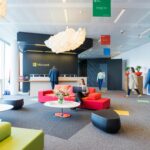Over the past few years, return-to-office policies have been a major focus for companies and the commercial real estate industry. Despite the rise of hybrid and remote work, many businesses have pushed employees to come back more often in hopes of bringing energy back to the office. Despite these efforts, many buildings remain only partly used. For CRE owners and investors, it’s clear that strategies need to adapt. Flexible work isn’t going away, and office spaces need to stay active and valuable in this new reality.

A Growing Opportunity: Attracting Hybrid and Remote Workers Who Choose the Office
While many strategies still focus on bringing full-time employees back to the office, a largely untapped opportunity is being overlooked. Freelancers, independent consultants, and employees at remote-first companies often look for professional work environments a few days a week, not because they have to, but because it helps them work better.
Many of these workers appreciate the flexibility of remote work but also recognize the value of a dedicated workspace to separate their home life from work. Offices offer a place to focus without distractions and access to valuable resources. For some, it’s also about being around like-minded people who can offer support, networking, or collaboration possibilities.
This segment of workers is growing rapidly as more companies adopt flexible policies and more people pursue independent or remote careers. By creating office spaces that welcome and support these flexible users, CRE owners can tap into a vibrant and growing market. This approach can help increase long-term tenancy, reduce vacancy risk, and transform offices into thriving hubs of productivity and community.
How Tenants Can Adapt to Remote Work Trends
Meeting the needs of this audience requires more than just offering desks. It means creating spaces that provide unique value that people genuinely want to use. Offices should be flexible and equipped with the right amenities for different needs, such as phone booths, meeting rooms, common spaces, and . For occasional users, convenience matters. This includes flexible access, clear visibility into availability, and a smooth experience when deciding to come in, even just once or twice a week. Maximizing the benefits of the in-person office experience should be a key part of any effective CRE strategy. This includes fostering collaboration by making it easier to see who is in the office, where they’re located, and when they’ll be there.
Making Offices Attractive for Flexible Work
This shift opens up new possibilities for how space is offered and managed. Offices can be reimagined as flexible resources, used not only by hybrid workers from specific companies but also by freelancers, remote workers, and employees of partner organizations. To support this broader use, CRE owners need better visibility into who is using the space, when, and how often. Modern booking and space management systems make it easier to understand how office space is being used. This helps owners make better decisions about layout, services, and leasing options. When space is easy to access and manage, it becomes more attractive to a wider range of tenants. This helps improve long-term tenancy, tenant satisfaction, and overall building performance.




